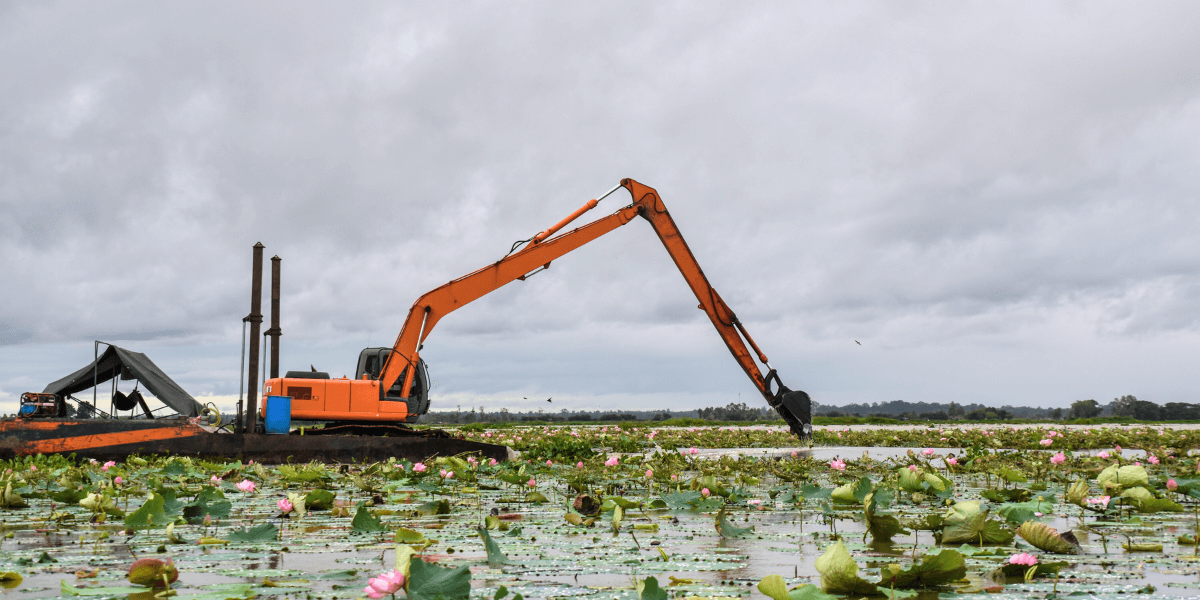Dredging For New Fish Habitats
Dredging is a necessary and beneficial practice that can create better ecosystems for fish. Unprecedented changes in our marine environment has led...
Dredgers are used to excavate various types of soil for a variety of purposes. Depending on the intended use of the dredged material, different properties must be considered when choosing a dredger.
This article provides an overview of the most common soil types dredgers encounter and their key characteristics.
The average dredge can move incredible amounts of material in a matter of minutes, often at a speed much faster than other machines. There are a myriad of different kinds of dredgers, all utilized across a litany of projects. From project to project, dredges and their operators may experience a wide variety of soil conditions and materials, including:

Before a dredger can be brought into a work site, often an on-site visit is scheduled where a surveyor looks at the soil and determines its classification. Grains size is often the first step in classifying the soil. Soil can consist of boulders, cobbles, gravels, sands, silts, clays, peats, and organic soils.
Soils are generally made up of three different grain sizes, which are then averaged to create a mean particle diameter. By using this mean particle diameter, surveyors can confidently suggest which dredging machine will be most appropriate for that particular project. Typically, dredgers are most commonly used to move sand, gravel, silts, and clay materials.
Sand has nothing binding it together, making it a loose, or incoherent, soil. Nothing is holding the sand together or keeping it bonded to the water. This makes sand incredibly easy for dredgers to move. Sand is used in a variety of projects around the world, perhaps most notably in beach reclamation projects.
Gravel is easily identified and is typically small in size. Larger pieces of gravel are reclassified as cobbles or boulders. Like sand, gravel is an incoherent soil, making it ideal for dredging via a suction dredge. But because of the increased size and weight of gravel, larger dredgers are required. Similar to sand, gravel is utilized in construction projects of all sizes and in all locations.
Nearly invisible, silt is made of very fine grains. There are two major kinds of silt, and each exhibits properties that make it important to have the proper dredger. Coarse silt is akin to sand and is easily suctioned with a dredger. However, fine silt is more like clay and sticks together to create pockets and patches of silt. A stronger dredger, like a cutter, will be needed to remove fine silt patches. Silt types can mix together and will adopt the properties of fine silt.
Clay is very dense and flexible, making it difficult for standard suction dredgers to remove patches of clay. Cutter dredgers and other machinery are required to dig out the clay soil. Once removed, it can be broken apart and pumped into a nearby hopper to move it to a disposal site.
No matter what kind of soil you’re working with during your next project, you can trust the dredging experts at US Aqua Services to make quick work of it. We offer a wide variety of dredging services, and can even rent you the dredging equipment you need. Contact us today to schedule a site visit and to find out more.
The Importance Of Dredging - In this blog post, we will discuss the importance of dredging and some of its benefits.
Dredging For Environmental Remediation - This article will explain the importance of environmental dredging as well its benefits while discussing several different techniques used today.
U.S. Aqua Services was created to support the dredging process in advancing commerce and responding to its many challenges. To accomplish this, our dredging company assembled an exceptional group of experienced individuals and a diverse inventory of dredge equipment and excavator dredge pumps.
We offer dredging equipment rental services so you can have access to the latest and greatest in dredging technology without having to pay to maintain it, transport, and store it, along with dewatering services.
With an emphasis on mobility, dependability, durability, diversity, efficiency, and safety, our dredging rental company can ensure that our different types of dredging systems are easy to move through any terrain and can work in the most rugged and remote environments. Our multi-function hydraulic systems are built with jetting and mechanical options that can efficiently move loose sediment or stiff layers of clay.
US Aqua services also and maintains a ready fleet of amphibious equipment capable of completing dredging projects in some of the harshest and most remote environments. U.S Aqua is also the dealer for Louisiana of the amphibious vehicle Fat Truck. No matter the size or scope of the job or the remoteness of your work location, you can rely on Fat Truck’s industrial off-road utility vehicles to get the job done right.
Dredging is a necessary and beneficial practice that can create better ecosystems for fish. Unprecedented changes in our marine environment has led...

A dredging project, like any major construction or renovation endeavor, necessitates a considerable amount of planning and insight in order to...
Expensive projects often require expensive equipment, it’s just a part of the construction field. There’s no denying that a dredging project is a...